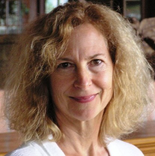When we are identified with the egoic mind, we live in the ego’s world, and that becomes our reality. The more we detach ourselves from the ego’s mental world, the more we taste reality, which is just what is, without all the mental images and stories that the mind overlays onto reality. Reality is whatever is actually showing up in the moment—what we experience through our five senses and also what we experience more subtly as intuition, internal drives, inspiration, and other communications from Essence. Exercise: Examining Your Self-Images Take a moment to list some of the ways you see yourself. Do you notice any themes in the images you have of yourself? What underlying beliefs about yourself do these self-images point to? What do you believe about yourself? Any belief you have doesn’t have any truth or reality. Anything you believe about yourself is just a story you’ve been telling yourself, perhaps because someone significant in your childhood told you that about yourself. These beliefs are only true because you believe them. Take that statement in for a moment. Nothing you believe about yourself is inherently true. And yet believing what you believe about yourself has shaped your life and affected your experience of yourself, of life, and even of others. And what you believe about yourself has affected other people’s perceptions of you. Beliefs are powerful if we believe them. Having some insight into the reality created by the egoic mind and by our conditioning is important in breaking identification with the egoic mind and in learning to live from Essence. Unless you can see that you are not the self-images you are living out, it will be difficult to see who you really are, which has no image attached to it whatsoever. Who you really are can’t be experienced as an image. It’s too vast and too much like no-thing to imagine it. The mind can’t grasp who you really are, which is one reason it creates self-images that it can grasp. The mind overlooks the deeper reality behind life because it can’t grasp it and, instead, creates a mental reality it can grasp and have some control over.
|
|||
|
|||


www.advaita.org.uk
Advaita for the 21st Century



Book Extract
Your Reality
Gina Lake

Gina Lake is a spiritual teacher and the author of numerous books. She has a master’s degree in counseling psychology and over twenty years experience supporting people in their spiritual growth. Her website offers information about her books and courses, free e-books, book excerpts, a monthly newsletter, a blog, and audio and video recordings.
Biography
BOOK DETAILS
Publisher: Endless Satsang Foundation
ISBN: 978-0615137629
Format : Paperback
Pages: 170
List Price: £11.50, US$14.95
Where to Buy
AUTHOR DETAILS

